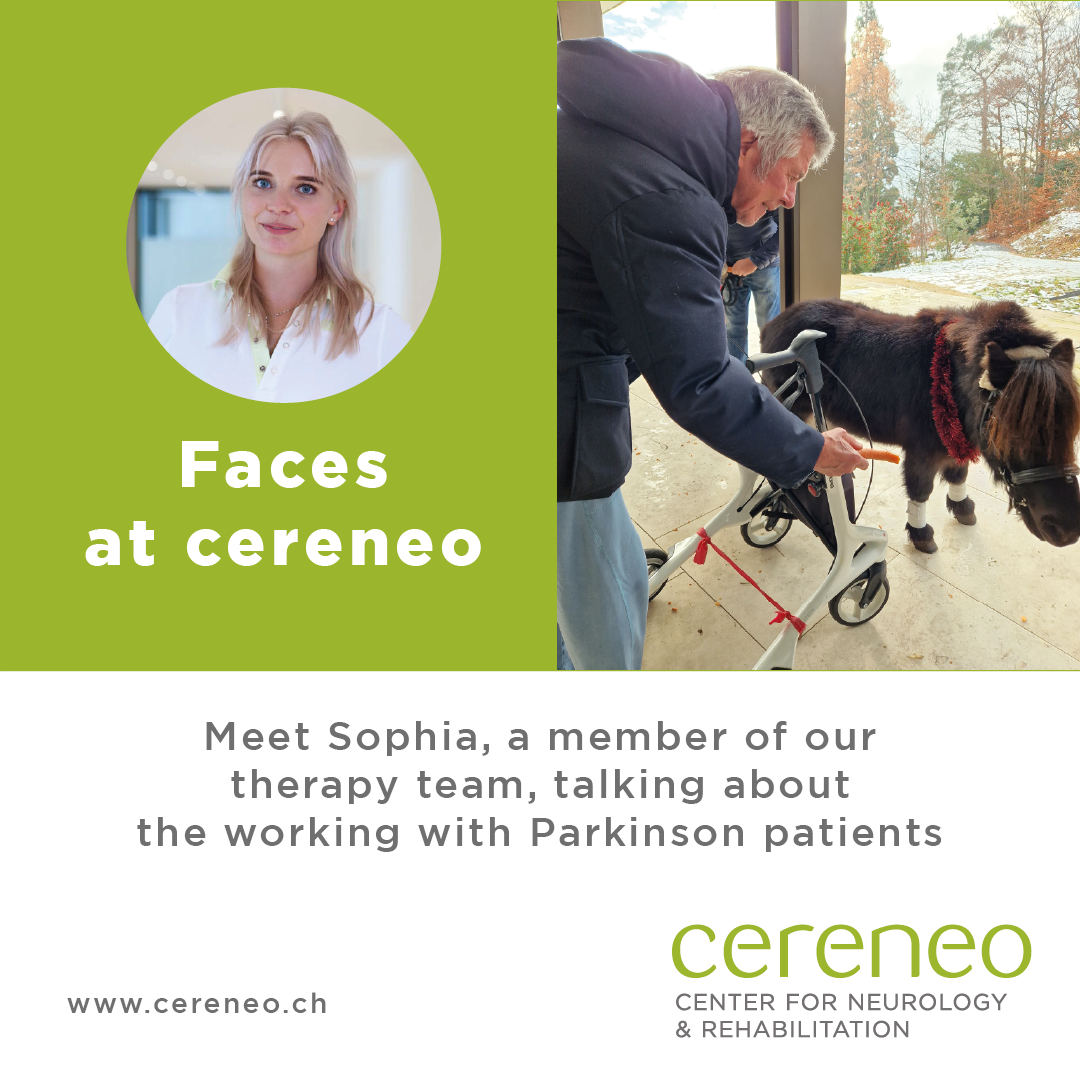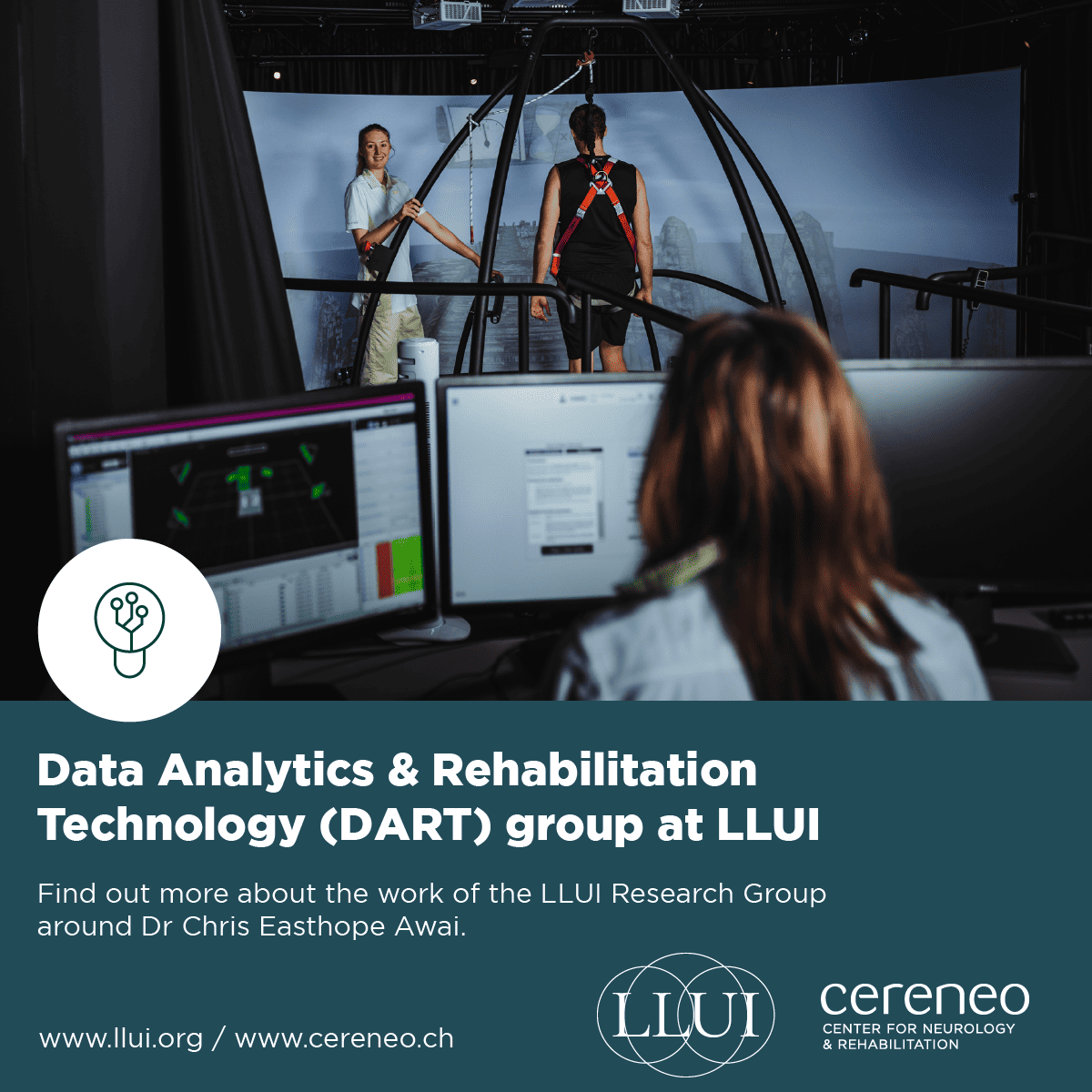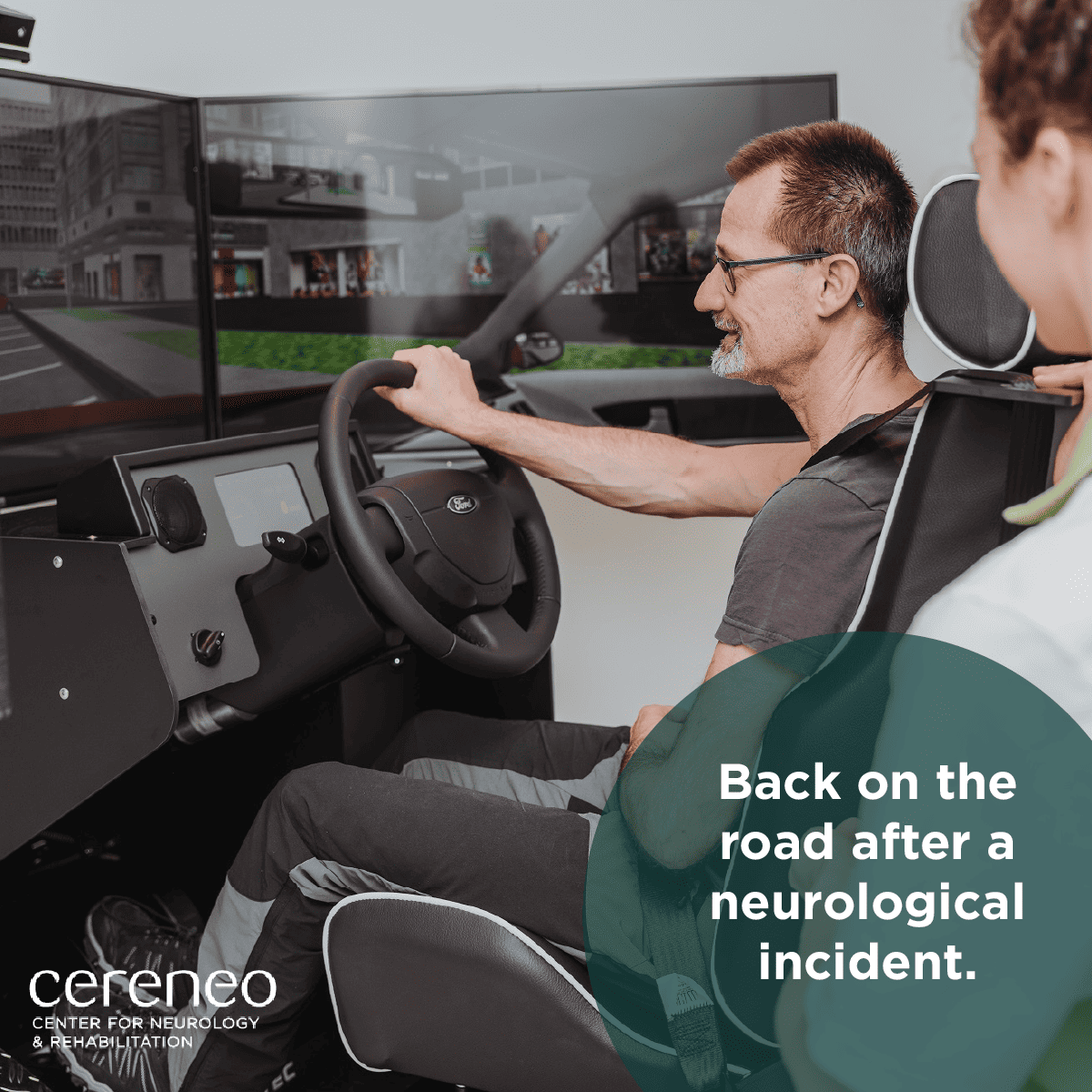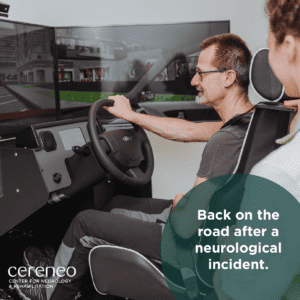Sophia Reuter has been working as a physiotherapist at cereneo since June 2020 and particularly likes working with Parkinson patients.
Why do you like working with Parkinson patients?
Physiotherapy is often about improving general fitness and coordination. As Parkinson is such a complex disease and with each clinical picture being different, therapy can be set up to be very varied.
What is particularly important in movement therapy for Parkinson patients?
The important thing to remember about Parkinson’s disease is that the earlier you start with therapy, the greater the likelihood of slowing down the course of the disease. If a patient has a good level of fitness at the time of diagnosis, mobility is often better even as the disease progresses.
For all patients alike, mobilisation and staying active play a very important role.
Many patients come to us with an unsteady gait. Here we focus on balance training, because it improves gait and stand stability and thus reduces the risk of falling.
A common problem is “freezing of gait” (abrupt stopping while walking), which is difficult to influence with medication or brain stimulation. This is where movement therapy can help a lot.
What does the therapy look like for our patients in the clinic?
We often start with strength and endurance training and usually work on the so-called home programme for training at home from the beginning. With Parkinson, it is very important to exercise every day. Even after inpatient rehabilitation! In the home programme, we work together on techniques and strategies for coordination, mobility and balance. In addition, each patient has additional, very individual sessions. The focus is on the main deficit of the respective patient, e.g. additional gait training, mobility or coordination. Movement therapy is supplemented by neuropsychological training and speech therapy. Training of the facial muscles is very important because they often stiffen – a typical symptom of Parkinson’s disease is a mask-like face.
We often also check the provision of aiding tools and choose the aid that provides the “least” support but is still feasible and a positive challenge for the patient. This can be walking sticks instead of a rollator, for example, which have a positive effect on coordination.
What other symptoms are typical of Parkinson?
Typical physical symptoms of the disease include tremor (tremor at rest), muscle stiffness (rigour), slowed movements with small steps and also reduced swinging of the arms (in many cases only one-sided).
However, changes or impairments in non-motor functions often occur much earlier and should alert relatives. Typical non-motor symptoms include talking in sleep or sleepwalking, incontinence, depression, anxiety, pain, dizziness and loss of smell.
When do patients come to the clinic?
We often have patients who have had a brain stimulator implanted or want to optimise their medication. The basic setting of the medication is very important, as the wrong dosage can lead to uncontrolled over-movements.
Typically, patients stay for 3 to 8 weeks. The ideal duration is a stay for 6-8 weeks so that the effects of a change in medication can be observed and possibly further adjusted.
Why do you like working with Parkinson patients?
Because you can train differently every day and there are so many possibilities to work on the main deficit. Many things can be trained in a playful way. I try to make the therapies as varied as possible, which motivates patients.
Can you give a few examples?
We play ball or table tennis, which trains coordination, stand and balance at the same time. I always ask the patients what kind of sport they do and then try to incorporate that into the therapy. I also often do dance training. It depends on who needs what and what needs to be strengthened.
What do you like about cereneo?
The possibility of giving individual therapy and being able to specifically address the deficits of each patient.
What do you do when you are not at cereneo?
My great passion is horseback riding. I have been riding since I was 5 years old and I still do it in my free time. I also try to include a therapy session with horses or ponies every now and then if a patient is interested. Grooming a horse is coordination and balance and leading a horse on a leash promotes a stable gait.










